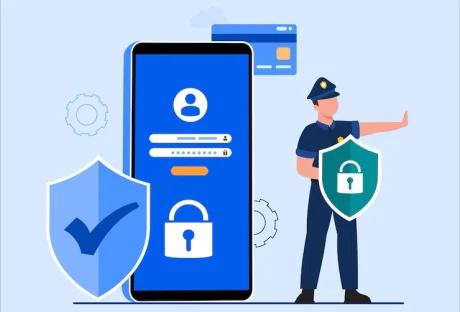Since the concern about cybersecurity has developed worldwide, organizations have promptly started to transition their cybersecurity strategies to mitigate any risk threatening cloud-based resources, sensitive data, and a remote working environment. One of the systems developed to protect paramount assets is Zero Trust Security.
What is Zero Trust?

Most cyberattacks happen at network perimeters. So, the traditional network security systems deploy security solutions that work on the network perimeter.
Yet not all threats are external, modern enterprises need an additional layer of security that blocks suspicious actions from inside the network. At this point, Zero Trust is superior to any other legacy products.
Although Zero Trust definition can be various, Zero Trust refers to a framework comprised of technological implementations, efficient security strategies, and practices.
With this structure, a boundary has been created around vulnerable assets, and sensitive resources are prevented from disclosure while the application entrance is restricted.
The Zero Trust Architecture requires both in and outside users to authenticate to access the sensitive resources. This technology uses robust authentication methods, preventing lateral migration, and putting the ‘never trust’ policy into action. To eliminate the ‘’always trust’’ principle, you can implement these steps.
How does Zero Trust work fundamentally?
By breaking an entire business network into smaller segments, Zero Trust offers to enhance your monitoring environment and intensify the security of the user validation process.
Each endpoint, user, or device must be authenticated and validated. Separating the whole workforce, the organization’s capability for data loss prevention becomes advanced.
Here Are Three Stages Of Establishing A Zero Trust Framework:

1-) Analyze and visualize your resources
To enhance your cybersecurity and prevent cyberattacks, you must consider determining your priorities and analyzing sensitive data resources and assets. With this, you can recognize where your resources have been kept and who has the authorization to reach them.
2-) Detect and mitigate threats
Malicious activities can be eliminated by monitoring user activity, creating trust-based borderlines, and predefining user roles. Also, halting intrusions into the most valuable assets and avoiding doubt or unauthorized movements from users and devices can be favorable.
3-) Optimize protection
Zero Trust Security combats cyber threats using tools 2FA, biometrics, and SSO. It is easy to integrate, scalable, and modular. Regardless of location and time, you can optimize your IT infrastructure and upgrade your user experience.
What Are the Benefits of Zero Trust in Terms of Cybersecurity?

As cloud-dependent, hybrid cloud, and fully digital businesses are becoming universal, enterprises’ financials, reputation, and maintenance have predominantly lied on IT systems.
Companies’ all core chunks now rely on technology, and here are examples that Zero Trust protection yielded in terms of companies’ assets:
1-) Increase Your Data Protection
It is vital to control data transmission to avoid any breach that threatens your sensitive customer data or intellectual property. Zero Trust helps you to mend your data security shortcomings. Also, it improves your data protection capabilities.
2-) Enhance Your Remote Workforce Security
According to Statista, most remote employees consider their work devices as personal devices since remote work has become common.
While using work computers or mobile phones for personal reasons climbed up among employees, companies started to be concerned about data breaches.
Zero Trust decides whether to permit users onto the network or not. Each user has been given limited access to resources. For example, change in a job description, an employee can be locked out of the resources that he used to have authority to access. So, the abuse of privileges has been prevented by using this technology.
3-) Widen Your Protection Against Brand New Threats
Zero Trust uses Micro-segmentation, location ID, and behavioral trust score to enhance your security and your capability to get protected against internal and external threats. It detects the request’s location and time for tracing the breaches before they happen.
4-) Automation and Simplify IT Management
With Zero Trust Architecture, enterprises can imply measurements and no need for human resources for Cybersecurity implementations. The Zero Trust also offers automation that covers manual cybersecurity skill blackness.
Conclusion
Zero Trust Security offers a brand-new framework for data security, cyber threats, and intrusions. Due to the evolving workplace environment and concern for the secure, Zero Trust, with its ease of integrating your business, comes as a holistic technology.
Phase out the VPN solutions to a widened protection technology for each enterprise in terms of the changing dynamics of today’s business requirements.
Soon, almost all organizations will adapt themselves to Zero Trust security and must urge you to implement Zero Trust Security in your business.
Read Also:






















